Sustainability Locations
Overview
Lying in an arc around the northern part of the Northwest Campus is a Sustainability Crescent of five unique resources that faculty can use to incorporate sustainability and the concepts of ecological preservation, economic viability, and social justice into class curricula and discussions.
- North Woods Teaching Area
- Kika Silva Pla Planetarium
- Renewable Energy Accessible (REAL) Lab
- Jean Klein Rock Cycle Garden
- SF Teaching Zoo
There are two unique off-campus resources also available:
Bat Cave
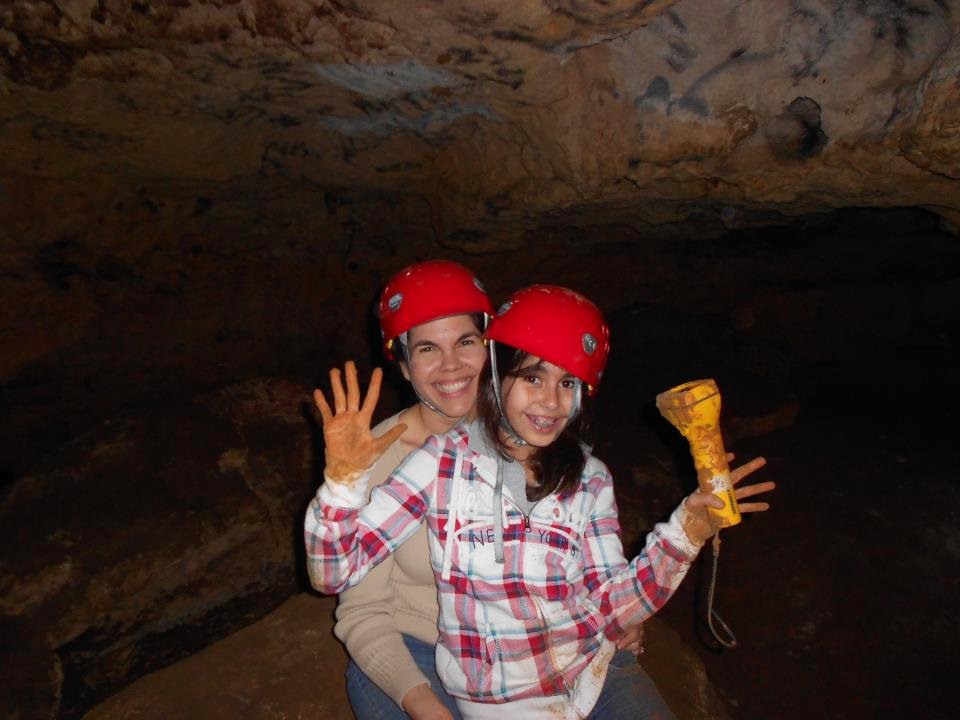
Santa Fe College's Natural Sciences Department manages the Harvey Sharron Bat Cave Field Laboratory in Newberry to allow cave access to classes and group field trips that are educational in nature. The cave is named for Santa Fe College's former longtime director of development and chief fundraiser.
The bat cave is an example of one of the classic features of the karst (porous limestone) topography that occurs throughout Florida. A visit to the cave enables students to experience conditions where the water table is close to the surface and an underground lake is actually the top layer of the Florida aquifer, which provides drinking water for most of North Florida and feeds our areas 1,000 freshwater springs.
The conditions in the cave provide a rich context for discussions about Florida's geology and hydrological cycle as well as discussions about how water use decision-making affects the sustainability and security of the aquifer. Discussions may revolve around water pollution, water balance, water conservation, water law, and the political factors that influence state agency decisions about water use.
Students in biology, geography, geology and general physical science use the bat cave to learn about Florida's karst topography-landscapes formed by soluble rocks such as limestone that have dissolved to form underground drainage systems with shafts, tunnels, caves and sinkholes-and the animals that make their homes in those features.
"We bring students down into the cave and talk about the geology of Florida and how caves are formed," said Geology Professor Greg Mead. "We talk about groundwater-how it winds up in the ground, how the water table changes as climate changes, and how groundwater and the water table get affected by development."
Several programs and departments at the University of Florida, including the Law School, also use the bat cave for teaching purposes. The bat cave's website provides a quiz that students may take to find out how much they learn from their visit.
North Woods
The North Woods Teaching Area, approximately 10 acres in size, preserves the last remaining undeveloped site at Santa Fe College's Northwest Campus. The site is maintained for conservation of native plants and wildlife and to provide a living nature laboratory for students, faculty and staff members.
The area includes trails that pass through a mix of open fields, mixed pine and hardwood, pine flatwood, and mesic hammock dominated by live oaks. The area also includes several small sinkholes-including one pond that holds water-that serve as aquifer recharge areas. Controlled burns have been done on one of the pine flatwood areas and on an open field, enabling students to observe how plant species recover from fire.
The North Woods Projects page includes lists of the birds, flora and fauna-including reptiles and amphibians-that visitors to the area might expect to see.
Instructors in biology, botany, ecology, environmental science, geography and geology use the North Woods for such activities as plant and animal identification and studies of ecological succession, pond ecology and animal behavior.
We encourage instructors in other academic disciplines-for example, art, design, digital media, humanities, journalism, writing, social sciences and psychology-to consider how they might use the North Woods Teaching Area to inspire learning about sustainability as it applies to your fields of study.
REAL Lab
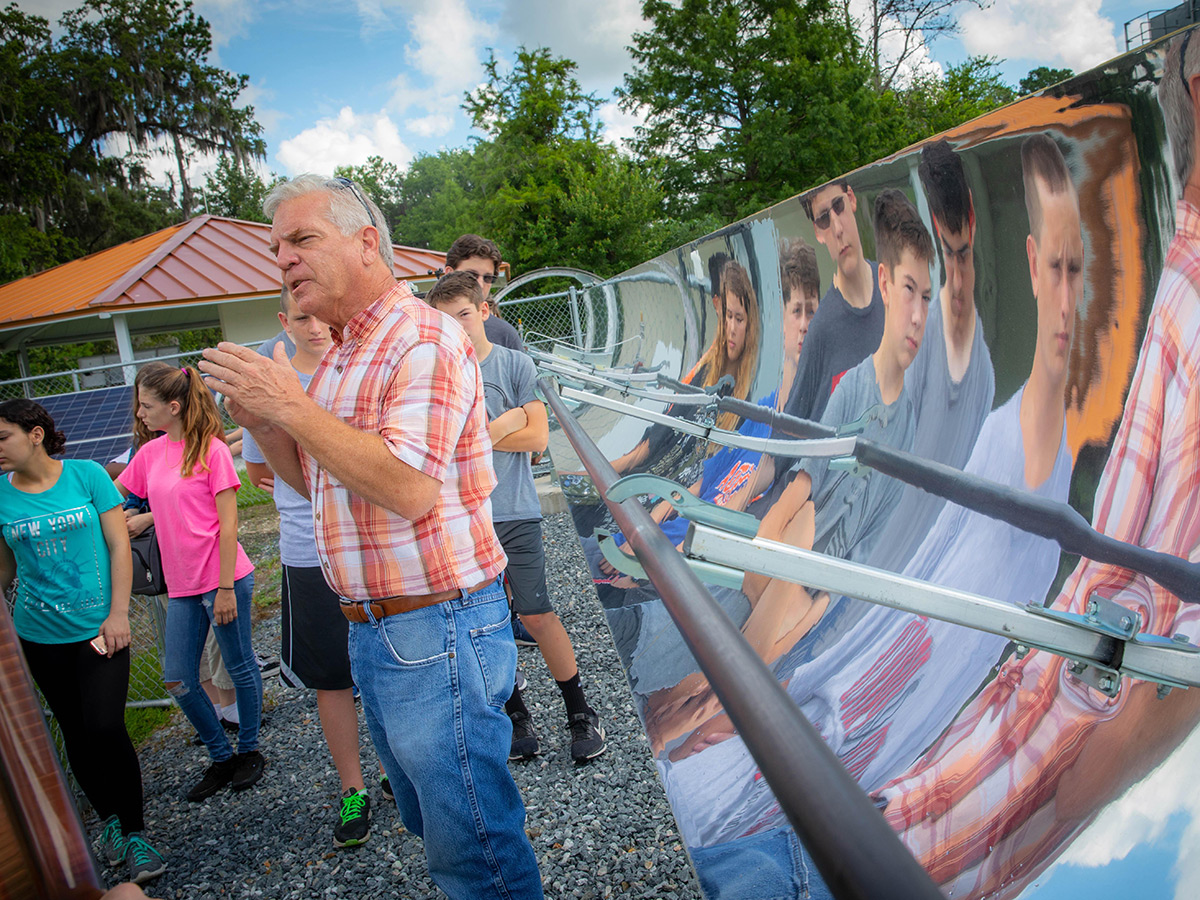 Inside a chain-link fence across the street from the gymnasium, the reflective silver
arrays of the Renewable Energy Accessible Lab (REAL) glint and shine in the sunlight.
The photovoltaic panels, evacuated tube arrays and parabolic trough collectors that
make up the lab convert sunlight into energy that provides the Northwest Campus with
hot water.
Inside a chain-link fence across the street from the gymnasium, the reflective silver
arrays of the Renewable Energy Accessible Lab (REAL) glint and shine in the sunlight.
The photovoltaic panels, evacuated tube arrays and parabolic trough collectors that
make up the lab convert sunlight into energy that provides the Northwest Campus with
hot water.
But the REAL Lab does more than provide energy; it is also a teaching tool. At the adjacent Solar Pavilion, instructors, students and visitors can view an interactive presentation to learn how these new technologies work. Visitors are introduced to "The Carbonator," a dirty villain who gets power from pollution when energy is produced from burning fossil fuels. The heroes who must conquer "The Carbonator" are the cleaner solar energy technologies of the REAL Lab's array.
"The REAL Lab is a way to get sustainability into classes in multiple disciplines and make it a focus for students, instead of just talking about it," said the lab's creator, retired Associate Vice President for Facilities Bill Reese.
"The lab highlights the practical application of math and science in real-life and in technical career fields such as building construction," said Associate Vice President Vilma Fuentes. "Students can see the different solar technologies, have conversations about how they work, page through the program in the pavilion, and apply what they have learned in class assignments. We have one instructor who is going to use the lab to teach students how to calculate the energy footprints of buildings. Those kinds of projects are almost impossible to assign in most places where precise information about a building's square footage, the precise materials used in construction, and the origin of this materials is difficult to obtain. Here at Santa Fe College, all that information is available to our students."
The lab also offers a way to introduce visiting elementary and high school school students to solar technologies and to the career opportunities that exist in scientific and technical fields. The interactive lab has a direct application for courses in the STEM fields. Instructors in other academic disciplines are encouraged to consider how they might use the REAL Lab in their courses.
Rock Cycle
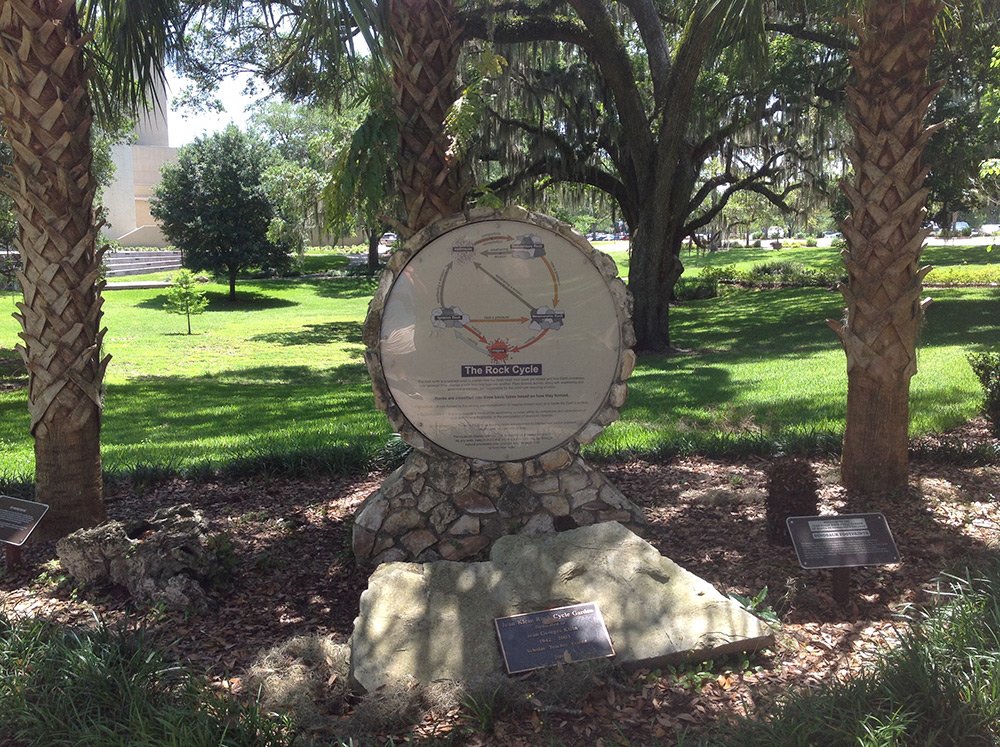
Named for a popular professor who inspired students throughout his 35-year tenure at Santa Fe College, the Jean Klein Rock Cycle Garden is a succession of over 20 boulders that encircle a large sinkhole between the Library and the Fine Arts Hall at the Northwest Campus.
The boulders are displayed in a clockwise sequence that helps visitors understand how different geologic processes-heating, cooling, melting, compaction, cementation, pressure, weathering and erosion-combine to form igneous, sedimentary and metamorphic rock. Students and visitors can print an interactive Rock Cycle Exercise to take with them as they walk through the garden. Reading the interpretive panels next to the boulders will help them answer questions about the rocks.
The sinkhole-which, like other sinkholes on campus, fills with water after heavy rain-is also a teaching tool because it provides an excellent example of how Florida's porous limestone permits rainfall to recharge the Florida aquifer. That aquifer not only provides our drinking water but also feeds North Florida's over 1000 freshwater springs, the largest concentration of such springs on the planet. Sinkholes are also, unfortunately, direct conduits through which pollution such as motor oil, nitrates and pesticides can enter the aquifer.
"Florida's geology is boring when it comes to rocks because we only have about two kinds," said SF Geology Instructor Greg Mead. "When I bring students to the Rock Cycle Garden, it's a chance for them to be able to see what kinds of rocks exist in other places. I start at the sign and ask them to imagine that we are up to our ankles in magma and as we walk around the circle, we talk about how that magma cools and how rocks get placed under pressure. We also talk about the sinkhole and the role that sinkholes play in recharging the aquifer."
Public attention has recently been focused on the decline in flow and water quality in Florida's springs. This focus highlights the importance of understanding the state's hydrological cycle-including the role played by sinkholes in allowing water and pollutants to enter the aquifer-and how that knowledge may or may not be used to make sustainable environmental decisions.
Santa Fe College classes in geology, general physical science, earth and space science and astronomy currently use the Rock Cycle Garden. Geology classes from the University of Florida also make frequent use of this unique teaching tool.
Seahorse Key Marine Laboratory
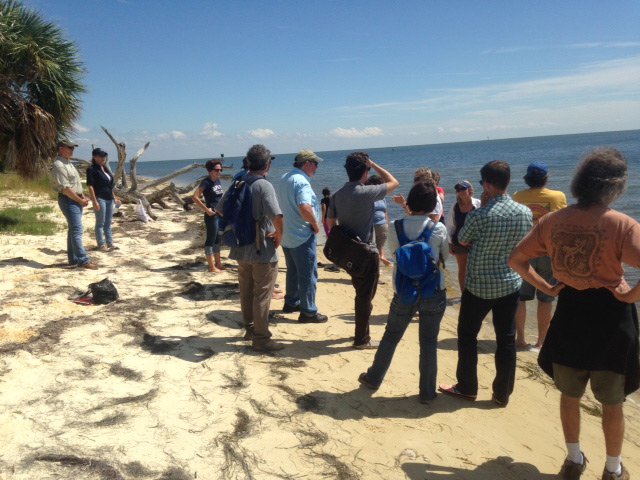 Located on an island in the Cedar Keys National Wildlife Refuge off the west coast
of Florida's Big Bend region, the Seahorse Key Marine Laboratory(Opens in new window) functions as a living classroom. A collaboration between the University of Florida
and Santa Fe College, the laboratory's mission is to advance the understanding of
marine and coastal science and natural resource sustainability through research support,
field-based teaching, and public outreach.
Located on an island in the Cedar Keys National Wildlife Refuge off the west coast
of Florida's Big Bend region, the Seahorse Key Marine Laboratory(Opens in new window) functions as a living classroom. A collaboration between the University of Florida
and Santa Fe College, the laboratory's mission is to advance the understanding of
marine and coastal science and natural resource sustainability through research support,
field-based teaching, and public outreach.
The Cedar Keys National Wildlife Refuge was established to protect breeding bird colonies with tens of thousands of birds. An ancient sand dune and one of the highest points in the Big Bend, the 165-acre Seahorse Key offers people at all levels - from university researchers and Ph.D. candidates to grade schoolers - the opportunity to study several different habitats including upland hammock, salt marsh, mud flats and mangroves. A historic, pre-Civil War era lighthouse serves as a dormitory for visitors and researchers. Day trips to the island are also available.
Seahorse Key's abundant and relatively untouched resources support rich fields of study in geology, oceanography and history. The University of Florida's marine biology courses that use Seahorse Key accept SF students in parallel courses. Santa Fe College students who are studying anthropology, biology, botany, environmental science, geology and journalism have made the trip to Seahorse Key.
Researchers at the marine lab are studying horseshoe crab behavior, climate change indicators, snake ecology and evolution, and mangrove migration. One researcher is studying the rare relationship that exists between nesting birds and local cottonmouth snakes, in which the birds provide the snakes with fish and the snakes protect the birds from potential nest predators.
Please consider how you might use the experiential opportunities offered at the Seahorse Key Marine Laboratory in your courses.
Teaching Zoo
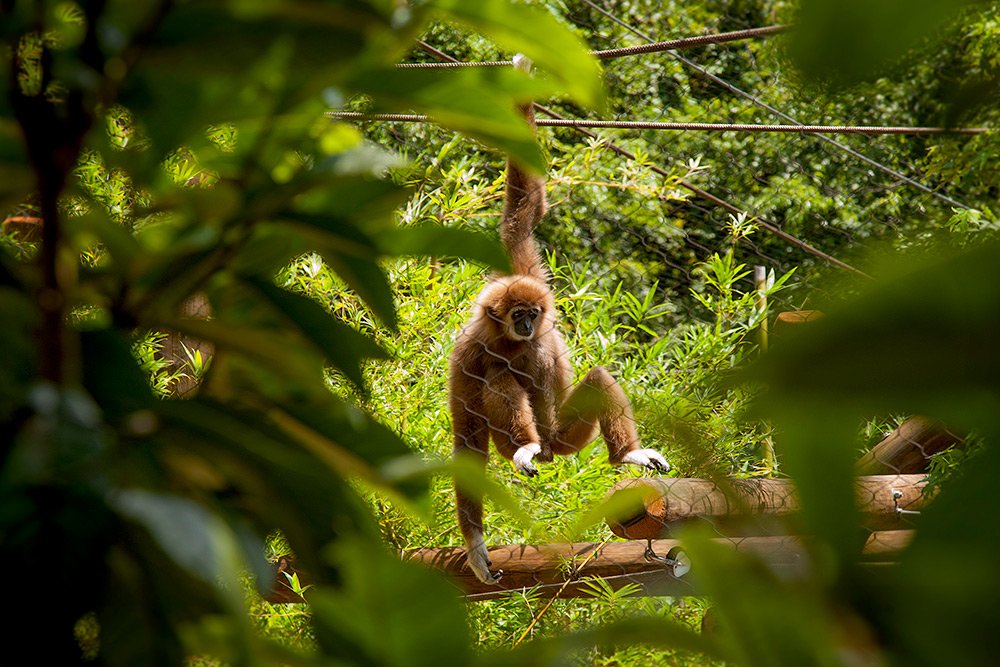 Originally created to train students for jobs as zookeepers, the Santa Fe College Teaching Zoo has evolved to demonstrate a strong commitment to sustainability through public education
activities, captive breeding programs, and the use of sustainable practices in day-to-day
operations.
Originally created to train students for jobs as zookeepers, the Santa Fe College Teaching Zoo has evolved to demonstrate a strong commitment to sustainability through public education
activities, captive breeding programs, and the use of sustainable practices in day-to-day
operations.
Botany and biology classes use the zoo to study the exotic and native animals and plants found there as well as to observe plant succession in the wooded area where the zoo is located. Various issues that are raised in zoo programs and maintenance are potential sources for discussions in such classes as education, ethics, ecology, writing, art, design and digital media.
Captive Breeding Programs
The purpose of captive breeding programs is to maintain and protect the gene pools of animals whose existence may be threatened or endangered in the wild. With the human population expanding around the globe and natural habitats being destroyed at rapid rates, zoos have an important role to play in preventing animal extinction.
White-handed gibbons, bald eagles, Perdido Key beach mice, Asian small-clawed otters, red ruff lemurs, poison dart frogs, Matschie's tree kangaroos and Guam rails are some of the species bred at the zoo. Offspring are either released into the wild or sent to other zoos that participate in captive breeding programs.
The offspring that are sent to other zoos are the result of matched breeding, meaning their parents were matched based on committee recommendations about what they could contribute to the gene pools of captive populations.
The gibbons are natives of Borneo, Indonesia and the East Asian peninsula. The zoo's small family of two adults and two juveniles are part of a population of 100 in zoos in the United States. Eventually, the offspring of the adult gibbons will be sent to other zoos.
Eagles mate for life and the zoo had a breeding pair of bald eagles for many years. Neither of the eagles was healthy enough to be released into the wild, but over the years they produced 12 chicks that were released. Although the elderly male recently died, the female eagle may be seen by visiting groups.
The Perdido Key beach mouse is an interesting example of how even the smallest animal can play a vital part in maintaining an ecosystem. These mice exist on one island on the Florida-Alabama border. When a hurricane threatened that island, the Florida Fish & Wildlife Conservation Commission and the U.S. Fish and Wildlife Service moved the mice to safety to preserve their population. The Santa Fe College Teaching Zoo is one of three zoos in Florida that maintain a breeding population of Perdido Key beach mice.
Why are these tiny animals important? By distributing seeds, the mice play a crucial role in maintaining the grasses and sea oats that secure the dune structure of the island. Where the mice and dunes disappeared, individual properties suffered more storm damage than in places where dunes offered a degree of storm protection.
"The mice are a key component of the ecosystem and that ecosystem affects humans too," said Zoo Director Jonathan Miot. "The story of the mice carries a great message, but because they are nocturnal, the mice are challenging to display for visitors."
Another success story is that of the Guam rails, small flightless birds that nest on the ground whose population was destroyed by a brown tree snake that was accidentally introduced onto their native island. The zoo is one of the top breeders of Guam rails in the country and the breeding program has been very successful, with many of the birds being released onto a neighboring island in the Pacific Ocean.
Day-to-Day Operations
Through its commitment to keeping native plants on the grounds, the zoo encourages the presence of native birds and animals that visitors can enjoy seeing along with the exotic species. A small pond provides habitat for pond turtles, bullfrogs, banded water snakes, and native fish and plants. Herons also visit the area.
When exhibits are modified or no longer needed, as much construction material as possible is re-used. In contracting with suppliers of food for the animals, the zoo stresses a commitment to sustainable food production. When stocking the gift shop, the zoo looks for products from companies that are committed to sustainability.
For Boo at the Zoo, the popular Halloween event, the zoo purchases candy that is made with sustainably produced palm oil and encourages people who donate candy to do the same.
"This is a concern for Indonesia, where rainforests are being destroyed for palm farms," Miot explained. "Ultimately, we are a conservation organization, and that means sustainability."